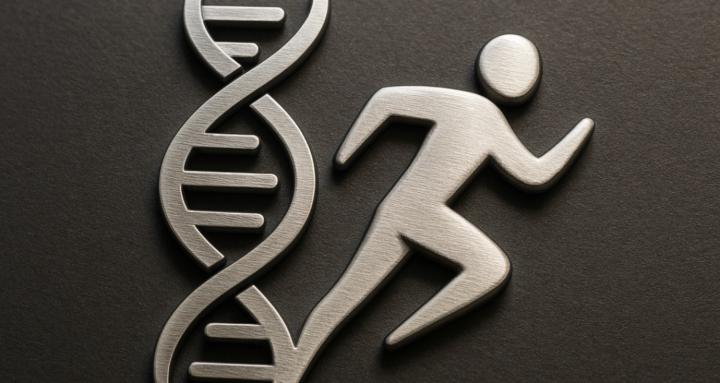Aug 24 • Article Series
Beef Up or Burn Out? The Wild Science of Myostatin and Mega-Muscles Part 1
When people think about muscle growth, they imagine lifting heavier weights, eating more protein, or recovering better. What most don’t realize is that your body has an internal brake system designed to stop muscles from growing unchecked. That brake is a protein called myostatin. Understanding how it works is key not just for athletes chasing performance but also for clinicians dealing with muscle loss in aging, disease, or recovery from injury.
Myostatin was discovered in the late 1990s and belongs to the TGF-beta superfamily, a group of proteins that help regulate growth and development across tissues. Its technical name is GDF-8. Farmers first stumbled on its power in Belgian Blue cattle, which carry a natural mutation that shuts the brake off. The result is double-muscled animals with enormous size but also some trade-offs in efficiency. A few rare humans have similar mutations, including one documented case of a toddler with unusually large and strong muscles for his age.
At the cellular level, myostatin signals through a receptor called ActRIIB. When it binds, it activates SMAD2 and SMAD3 proteins that travel into the nucleus of muscle cells. Once inside, they flip genetic switches that slow down myoblast proliferation and differentiation the very processes needed to grow or repair muscle fibers. In other words, myostatin’s job is to limit both the number of fibers you build and the size they can reach once they mature.
Why would the body design such a limiter? It comes down to energy economics. Muscle tissue is expensive to maintain. A bigger engine requires more fuel, more oxygen, and more repair. Myostatin helps balance growth against the available energy and ensures the body doesn’t sacrifice metabolic stability for vanity muscle. Research shows myostatin also influences fat metabolism and glucose handling. For example, it can directly regulate skeletal muscle glucose uptake in ways that aren’t just about size, suggesting it has a systemic role in balancing energy use.
Think of it like this: your muscles are a high-performance sports car, and myostatin is the speed limiter. Without it, you could redline the engine and build massive horsepower, but the battery might drain faster, the tires could wear unevenly, and the system as a whole might not be built to handle it. Myostatin keeps things in balance.
The fascinating part is how natural variations reveal both the potential and the cost of taking the brake off. Animals or people with myostatin mutations do grow bigger muscles, but those muscles don’t always perform better. They may favor short bursts of power while giving up some efficiency or endurance. This foreshadows an important theme we’ll return to later in this series: muscle growth without regard for energy balance and repair isn’t always the smartest trade.
In the next part of this series, we’ll explore how researchers have tried to cut or bypass this brake using drugs and biologics and why the results are both promising and complicated.
15
4 comments

skool.com/castore-built-to-adapt-7414
Where science meets results. Learn peptides, training, recovery & more. No ego, no fluff—just smarter bodies, better minds, built to adapt.
Powered by





